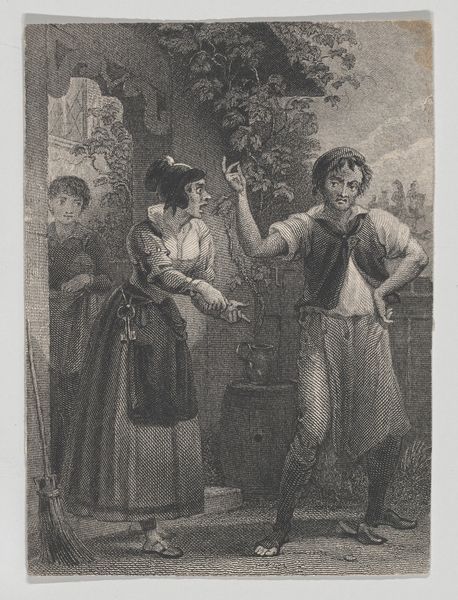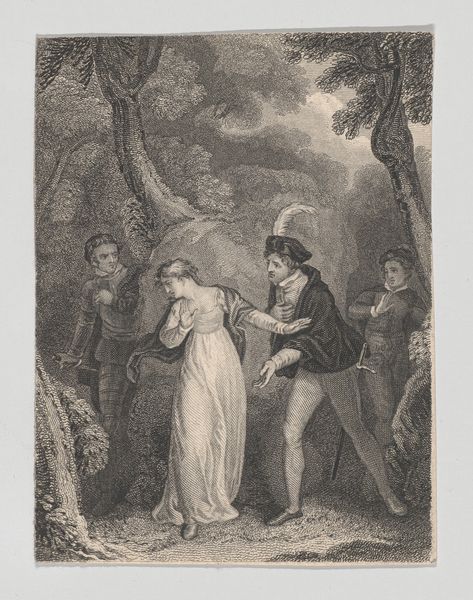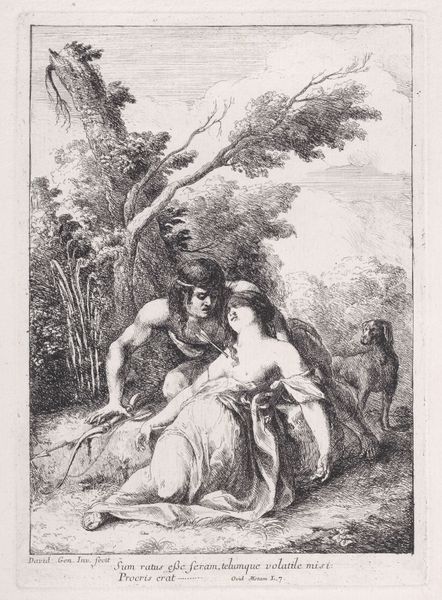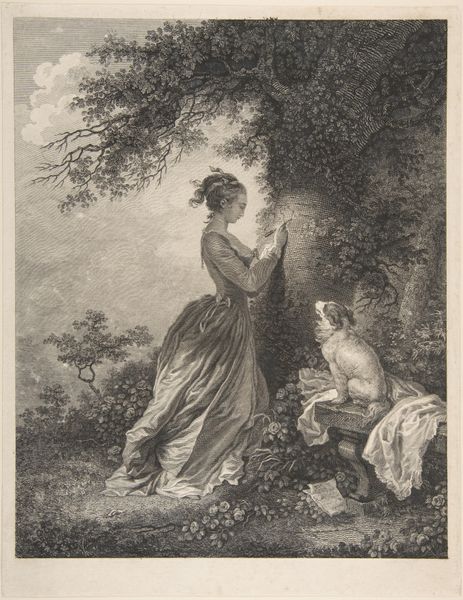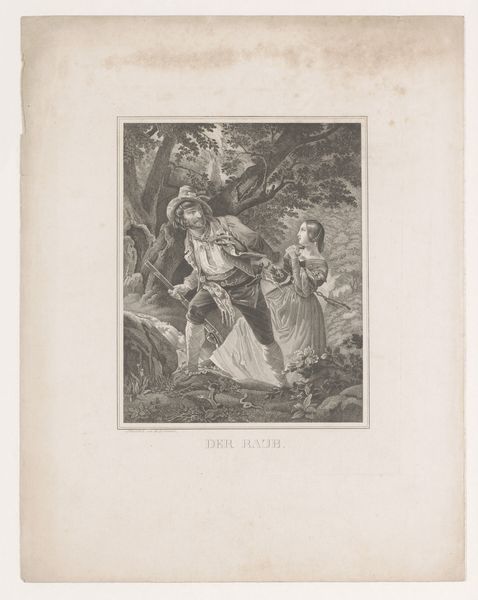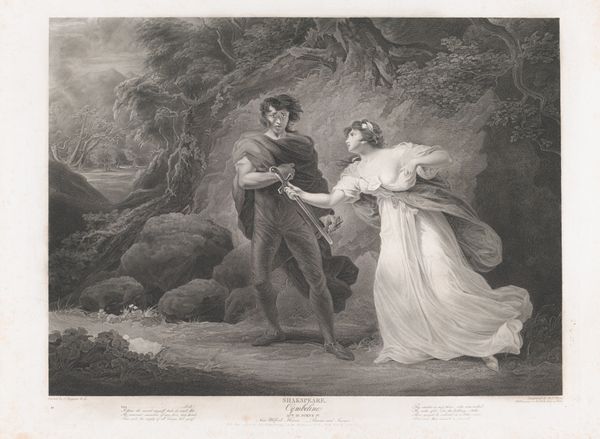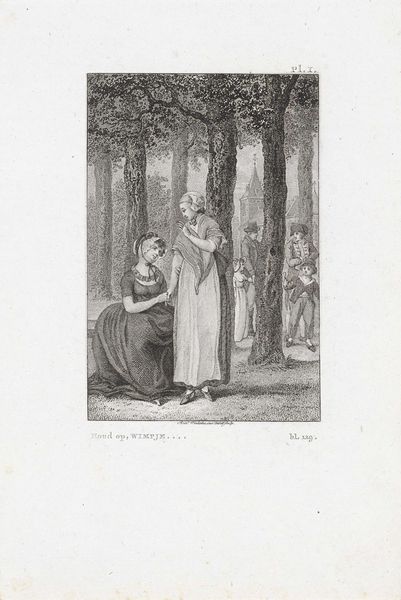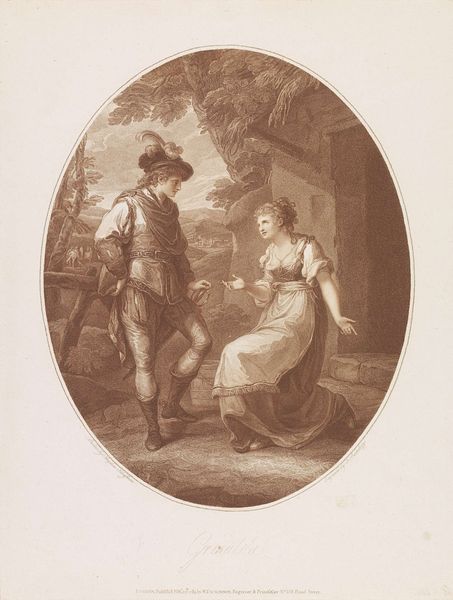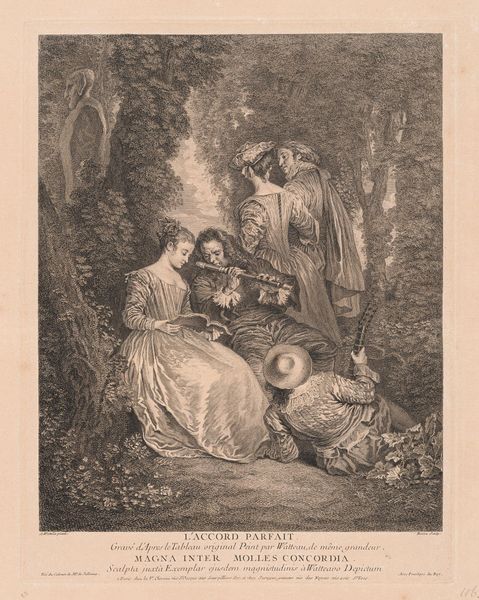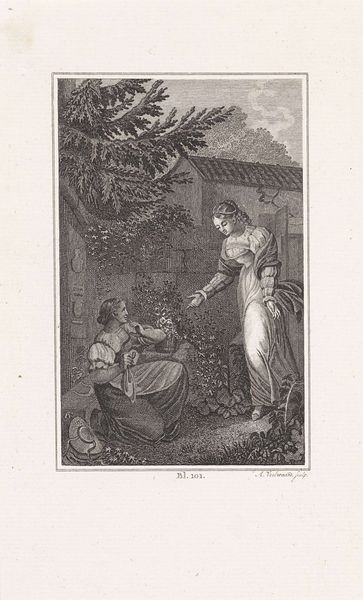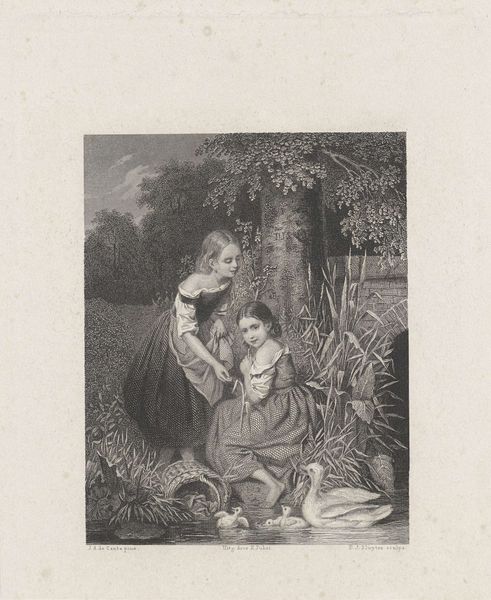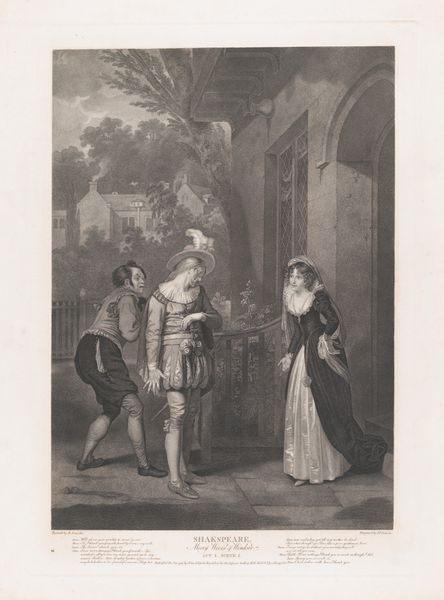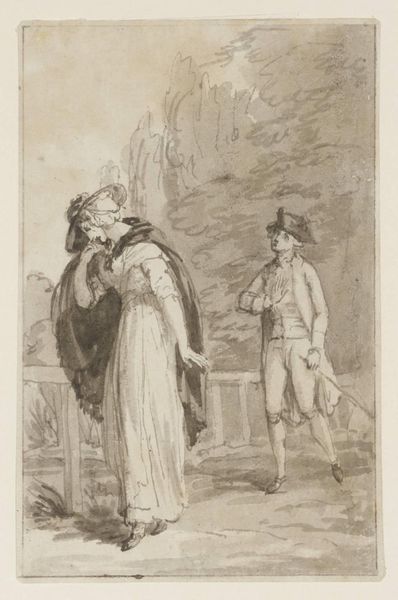
Beatrice and Benedick (Shakespeare, Much Ado About Nothing, Act 2, Scene 3) 1825 - 1840
0:00
0:00
drawing, print, engraving
#
portrait
#
pencil drawn
#
drawing
# print
#
figuration
#
romanticism
#
line
#
history-painting
#
engraving
Dimensions: Sheet: 3 7/16 × 2 9/16 in. (8.8 × 6.5 cm)
Copyright: Public Domain
Editor: Here we have Charles Heath the elder's print, "Beatrice and Benedick (Shakespeare, Much Ado About Nothing, Act 2, Scene 3)," dating from around 1825 to 1840. The characters seem to be frozen in a moment of introspection and pride, or perhaps mild conflict. What draws your eye? Curator: It’s fascinating how Heath captures the nuanced dynamics of Shakespeare’s characters. Notice how Beatrice gestures, hand slightly raised— a symbol of her quick wit and defiance. Benedick, hand to his chin, embodies contemplation and suppressed emotion. The visual language here echoes the play’s central themes. Editor: So the poses and gestures carry meaning beyond just illustrating the scene? Curator: Absolutely. Think about the setting. They're in a garden, a classic symbol of both love and deception. And there’s someone lurking behind them! Does that figure suggest eavesdropping or a more ethereal presence? It's a ghost of the subconscious perhaps or other character lurking behind the bushes in the original plot? Editor: That's true, I missed that before. It is like their inner thoughts are made visible in the scene itself. Why would he emphasize those themes? Curator: Consider the period; Romanticism embraced emotional intensity and the power of suggestion. Representing a Shakespearean scene, a popular theme at the time, through these layers of symbolic imagery elevates the narrative, appealing to a refined and literary audience. Editor: So the imagery provides emotional cues and contributes to a shared cultural understanding? Curator: Precisely! It’s a fascinating look into how artists used recognizable symbols to amplify the emotional weight of familiar stories. We gain a glimpse into the 19th-century appreciation and approach to storytelling through the iconic characters in *Much Ado About Nothing*. Editor: This has changed how I look at prints of that era. I now appreciate the depth and meaning that lies beyond the simple narrative illustration. Curator: It reveals cultural memory made visible and accessible, inviting continuous reinterpretation.
Comments
No comments
Be the first to comment and join the conversation on the ultimate creative platform.
